Documenting Truth: An Interview with Masrat Zahra
In April 2020, independent Kashmiri photojournalist Masrat Zahra was one of several activists and protestors booked by the Indian state for “anti-national” behaviour under the draconian Unlawful Activities (Prevention) Act (UAPA). She was twenty-six-years-old at the time. In spite of this, she has continued her fierce documentation of conflict in Kashmir under increasingly brutal conditions. Since then, she has won two international awards for courageous and ethical journalism and become a symbol of hope and resilience for the region and beyond.
Almost a year later, Zahra speaks to Ketaki Varma about what drove her to photojournalism, offering a local, female perspective to Kashmiri narratives and the importance of a continued ethical journalistic practice.
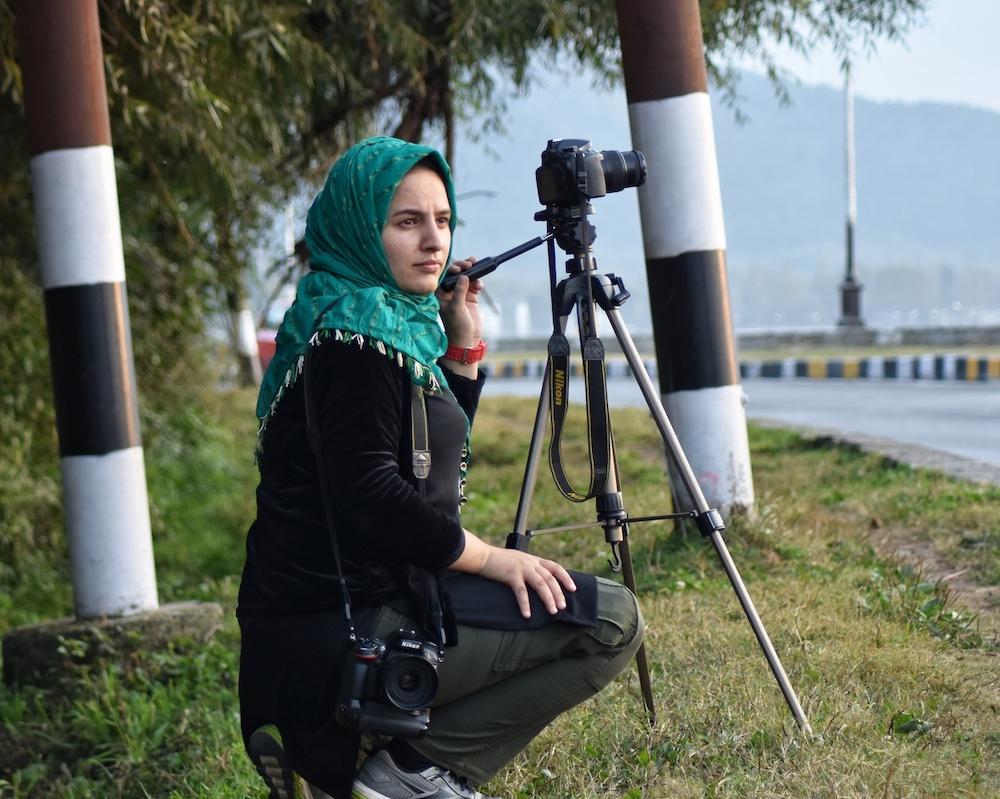
Masrat Zahra. (Photograph by Adil Hussain.)
Ketaki Varma (KV): In a politically turbulent landscape where new laws are being brought out everyday to intimidate journalists and First Information Reports (FIRs) are abundantly filed, what drove you towards photojournalistic practice?
Masrat Zahra (MZ): I was born and brought up in conflict-torn Srinagar (Kashmir). I live in the particularly volatile downtown area, where every day I saw encounters, killings and funeral processions. When I was very young, I used to go out with my grandmother and mother to visit shrines and other places. Here, I saw only male photojournalists taking photos—whether it was of women praying or a stone-pelting incident. At funeral processions, I saw them photograph wailing mothers and sisters. I noticed that the women felt uncomfortable facing a male journalist’s camera. Besides this, I also saw many foreign photographers, both men and women, who used to come to Kashmir. But even then, it remained a primarily male-dominated field. I thought to myself, “No, there should be someone from Kashmir, who will talk about what is happening in Kashmir.” There are many unheard stories (from Kashmir)—I wanted to tell them. Among these were the stories of women who were not comfortable with the male gaze. For this reason, I wanted to be a photojournalist.
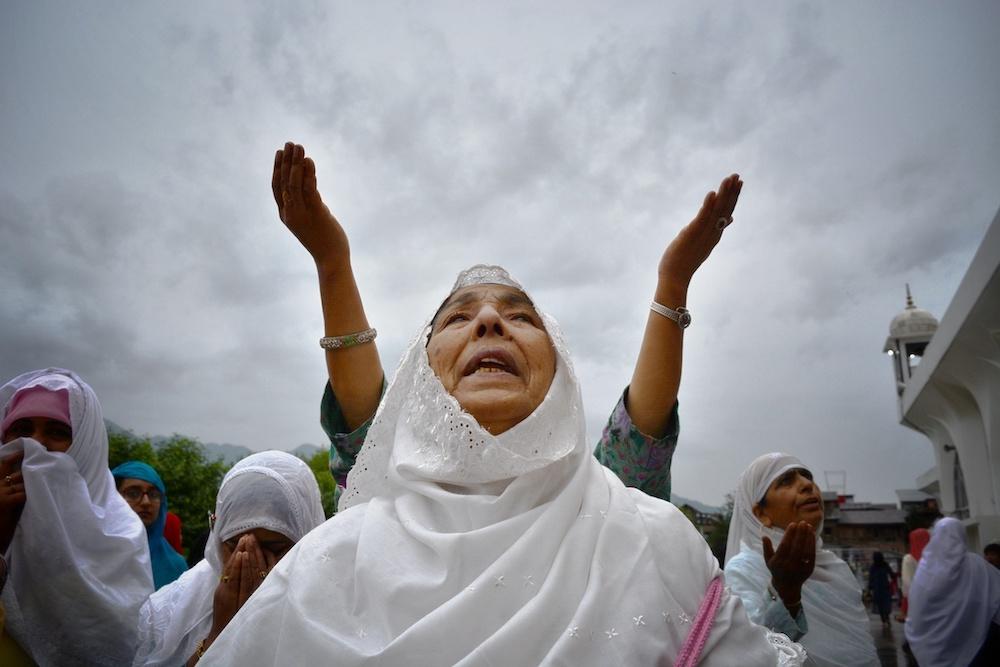
A Kashmiri woman prays during an annual Muslim ritual at a mosque in Srinagar, Kashmir. (Photograph by Masrat Zahra.)
KV: You mentioned that it is a male-dominated field. As such, how does Kashmiri society react to you being one of the very few women in the profession?
MZ: Let me talk about my family. They did not want me to become a photojournalist because there was not a single female Kashmiri photojournalist that I could offer as an example. If I had told them I wanted to become a doctor, I would have had a thousand examples, but not for photojournalism. Besides, going out with a camera in a conflict zone is dangerous. It is not that Muslim families are particularly conservative towards their daughters. Rather, it is that we live in a place where it is very hard for any journalist to work, not only for women but for men too. Under these circumstances, telling your family your intentions of becoming a photojournalist, a reporter on ground, becomes especially tough. For instance, you are talking to me right now, you can talk to me from anywhere, at any time. But as a visual storyteller you have to be on site, you have to be present. In Kashmir, there is curfew every other day. At such times, families stay at home—my brother and father do not go to office. But now, if there has been an encounter or there are restrictions, everyone is at home except me. I have to go out and cover the story. My brother asked, “What kind of job is this where the days that everyone is at home, you have to go out?” And especially when there is a communication shutdown—internet stops and phones do not work—my family worries about me being outdoors. My mother said, “How will people react to us, letting our daughter go out in this climate?” The struggle starts within the family, only then can one comment on society.
(But) When they discovered that photojournalism is a profession not just for men but for women too—and that people are appreciating and encouraging their daughter—they warmed to it.
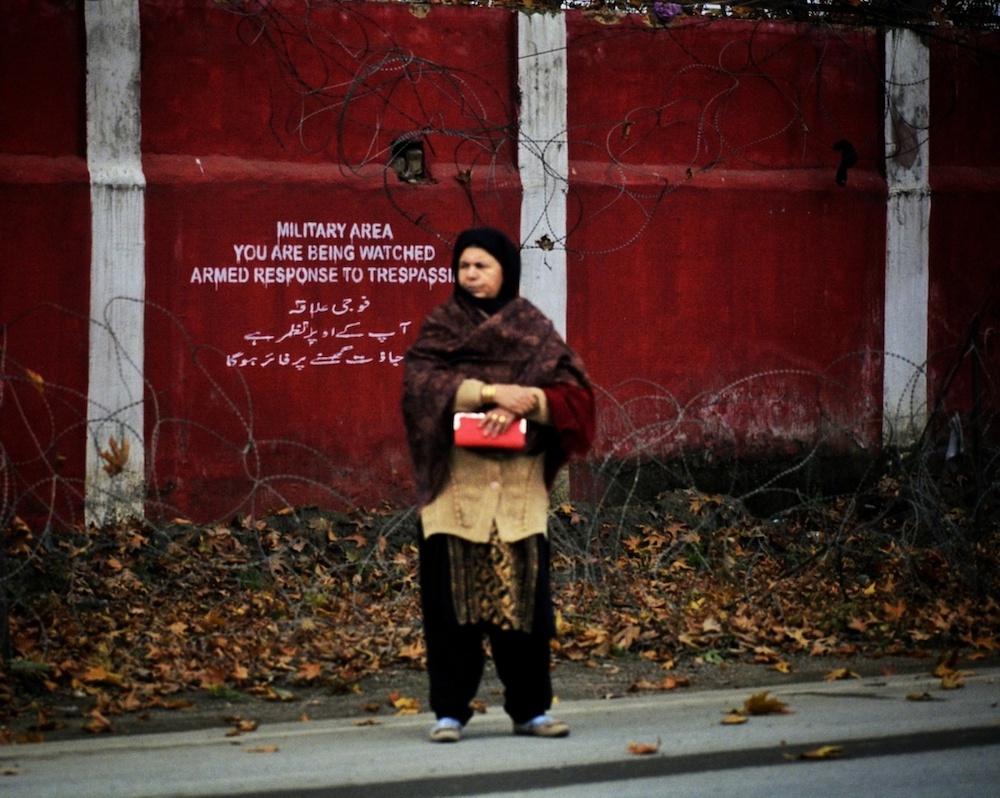
A Kashmiri woman stands in front of a stenciled message cautioning an armed response for trespassing inside the largest Indian Army base in Srinagar, Kashmir. (Photograph by Masrat Zahra.)
KV: I wanted you to talk about Kashmir and its depiction in photographic histories and popular culture. Kashmiri communities, their histories and desires, have largely been invisiblised in the history of colonial photography of Kashmir and later in the frames of Bollywood films. As a Kashmiri woman working with local communities, what reaction does this provoke in your work?
MZ: It was mostly journalists from outside who came to Kashmir and painted a rosy picture of the area. Similarly, the depiction of Kashmir in mainstream media or Bollywood is not accurate. Even now, foreigners come to Kashmir to curate exhibitions in Gulmarg or Pahalgam. They ask local photographers to submit their work, but only certain kinds of images fit their narrative—photographs that depict landscapes, for instance. But it is not only the beauty of Kashmir that is important. Behind that beauty is pain, and that is something they will never show to the world.
My photographs document the truth about the region and that is why the local communities appreciate me. As I am an independent photojournalist, I can work with any organisation I choose. If I think that an organisation is compromised or that they produce selective journalism, I will not contribute my work to them. Having our own independent organisations and photographers in Kashmir helps provide a realistic picture of the region. While I am a hardcore photojournalist, I do not only take pictures of violence. If it snows, I go out and take pictures of the snow to post on social media or to do a photo essay on the first snowfall of that year. I document everything. That is how one makes an archive, that is how one makes oneself.
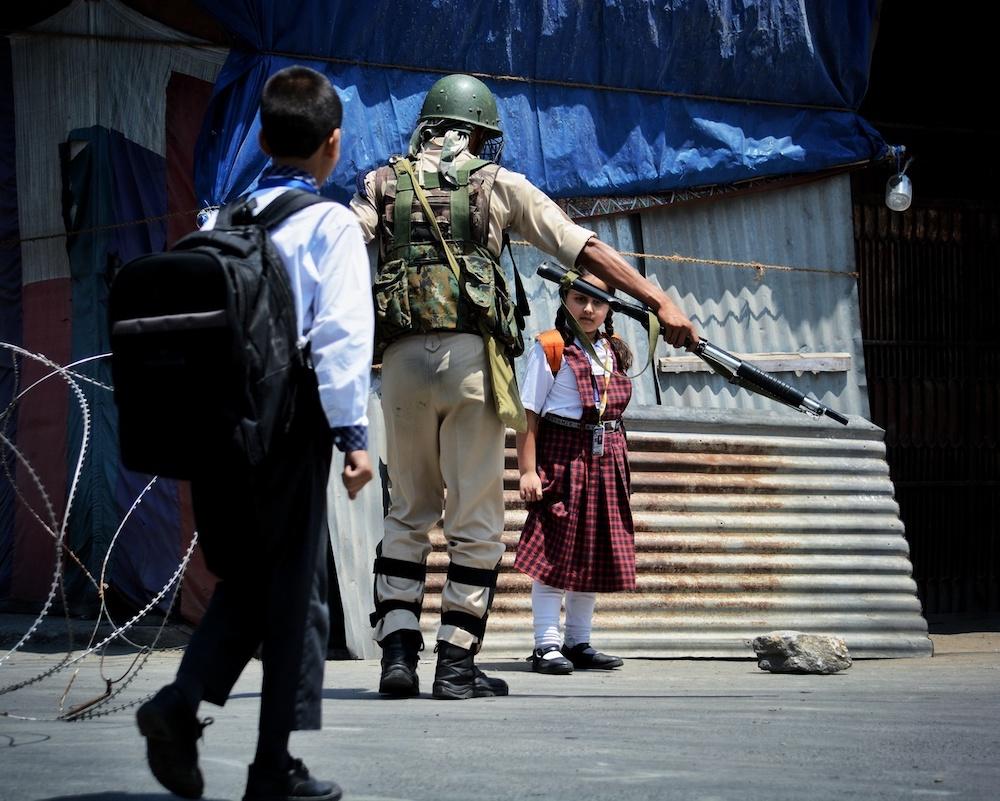
An Indian Army man stops a student at a barricade of razor wire set up on a road in Srinagar, Kashmir. (Photograph by Masrat Zahra.)
KV: The last decade has seen the digital space becoming a key site for image and news circulation. Ordinary people and non-journalists are becoming documentarians of what they see around them, sharing relevant and subversive information on social media in real time and building online communities of support. How does the formal discipline of photojournalism, then, evolve under these circumstances?
MZ: Uploading an image or a video on social media is not journalism. As a journalist, it is our responsibility to verify news, check facts, be ethical, consider and give space to all possible sides of the story as well as talk to every stakeholder. There are many benefits of social media, but we (as journalists) cannot say that our work is over. If someone uploads an image on social media, then journalists can find it, get information about a potential story from it, go to the site, collect facts, ask questions about the incident and following an ethical procedure, build a story around it. Recently, there was a story about an army car that crushed a motorcyclist. There were many people who took videos on the spot and uploaded them on social media. That is how people found out about the incident: journalists then rushed to the field and cross-checked everything. People may try to show a gory picture of this conflict, that an army car crushed a local person. But maybe it was the motorcyclist’s fault, maybe he was driving in the wrong lane. Or maybe it was the army person’s fault and it was an accident. It is our responsibility to examine the evidence and present facts. So, journalism begins after images and videos are circulated on social media.
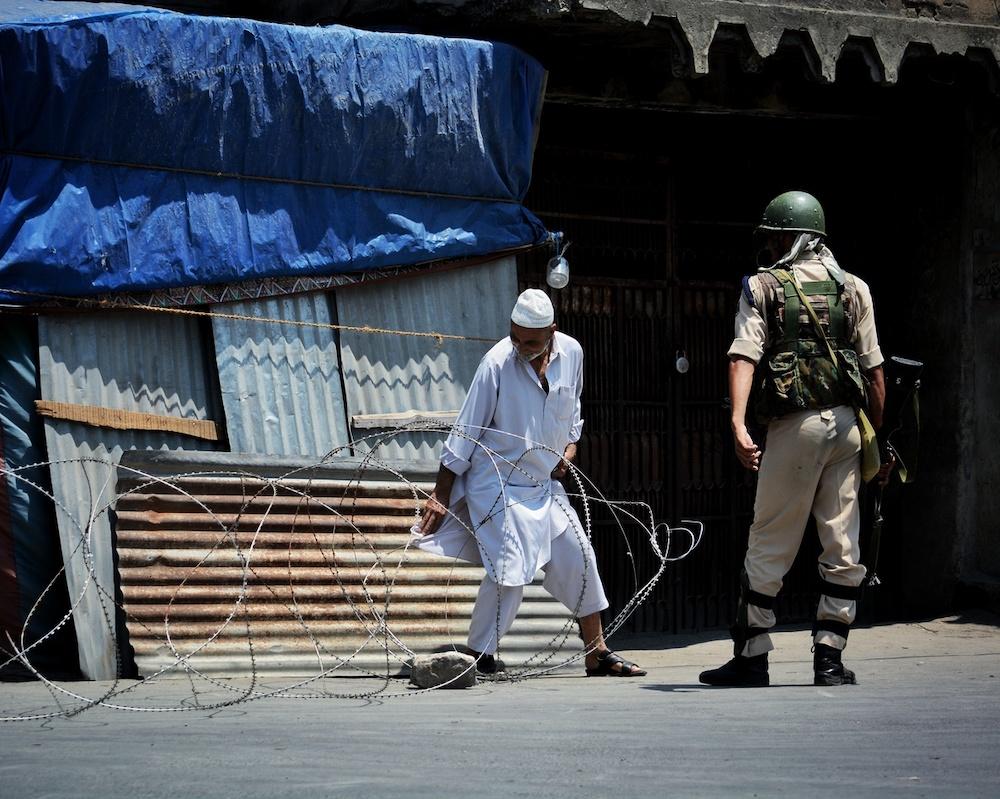
An old Kashmiri man tries to disentangle his clothes from a razor wire laid on a road in Srinagar, Kashmir. Such razor wire is a common sight as it is used to stop pedestrian and vehicular movement during a shutdown. (Photograph by Masrat Zahra.)
KV: Since Kashmir's changed status in India, the clampdown on freedom of speech and human rights in the region has become all the more brazen. At such a time, what would you say are the challenges of safely negotiating such a territory as a photojournalist?
MZ: It has always been hard for journalists in Kashmir. Now, it has become even harder. I was booked under UAPA—what was that? That was the Indian state’s message to the journalistic fraternity in Kashmir—that they are ruthless and would not even spare a young girl. It was to intimidate people into not writing the truth.
I take precautions when I work. For example, if I am doing a story which involves a quote from the police, I have to wait till I hear their side of the story. If I do not hear from them, then I simply cannot run the story as it is, I have to mention that I tried to contact them and got no response. Now there is talk of new media policies that will also impact journalism in Kashmir. It has become harder for everyone, so there is a need to take extra precautions each time.
All images courtesy of the artist.




